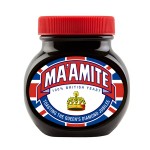 Brands that divide opinion are quite prevalent throughout society. Apple for instance famously set out to be everything that Microsoft was not. Coke have a strong rivalry with Pepsi, Nike with Adidas, and so on. In a competitive world, such rivalries are rather a natural thing. Indeed, in terms of the psychology of leadership, having such a clearly evident enemy is often seen as a good thing.
Brands that divide opinion are quite prevalent throughout society. Apple for instance famously set out to be everything that Microsoft was not. Coke have a strong rivalry with Pepsi, Nike with Adidas, and so on. In a competitive world, such rivalries are rather a natural thing. Indeed, in terms of the psychology of leadership, having such a clearly evident enemy is often seen as a good thing.
Social and psychological research for instance suggests that leadership should do four things if it wishes to be successful:
- Reflect the core values of your team/group/organization
- Champion members of that team
- Engineer a clear identity
- Deliver on your promises
A core part of reflecting the values of your organization is in clearly establishing the in groups and the out groups. This is where that rival comes in handy because they provide the clearly defined out group to your own organizations in group.
Whilst that line of thought has clear benefits for rallying the troops within an organization, does the same apply outside it? Do customers gravitate to brands that reflect their personality as much? A new study set out to explore whether brands that polarize opinion do better than the norm on the stock market, with some fascinating findings.
“Investors and company officials need to better understand the impact of brand dispersion – when consumers are polarized both for and against a certain brand,” explains Michael Wiles, assistant professor in the W. P. Carey School and one of the study’s authors. “Increasing brand dispersion may mean less amazing company returns overall, but it also means less volatile returns because some customers are super loyal and some haters will never buy the brand’s products, no matter what.”
The research looked at data from over 3 million users of 2,600 brands in America, the UK and Germany. These people were asked their perceptions around the brands quality, value and satisfaction levels, as well as whether they’d recommend the brand and would like to work for that company.
“Dispersion can affect investors’ confidence in a brand, such as when there’s a lot of negative chatter on social media,” says Wiles. “Downside dispersion has a stronger pull on returns in the short term.”
The research suggested that when a brand polarizes opinion, managers are left with two options: either attempt to placate the haters, or ramp up the rhetoric to further amplify the relationship with supporters.
Wiles weighs in on recent examples in the news that illustrate the importance of considering brand dispersion:
- General Motors is under scrutiny right now for its handling of faulty ignition switches. The negative information may lead GM’s more marginal customers to become brand haters and less likely to purchase the company’s stock. Wiles says the issue will probably lead to lower stock returns going forward, but the stock will also become less risky.
- Sochi was a problem for the normally low-dispersion brand of the Olympics. Wiles says holding the Winter Games at a “subtropical beach resort with palm trees” was inconsistent with the brand, and there were security questions and other logistical issues, as well. Consequences? Attendance was relatively low and television viewership right away was down 8 percent in comparison to the opening ceremony of the Vancouver Olympics.
- Coca-Cola, a high-dispersion brand, decided to embrace a recent controversy over its multilingual “America the Beautiful” ad that ran during the Super Bowl. The lovers and haters brought in 8.4 million YouTube views for the ad, delivering both positive and negative reviews on social media. The company decided to air an even longer version of the ad during the opening ceremony of the Olympics with an added “E Pluribus Unum” disclaimer.
- Taco Bell, another brand with lots of lovers and haters, recently launched a new breakfast menu with a brazen ad campaign that pokes at McDonald’s. Several real people named Ronald McDonald sing the praises of the new breakfast items. Those who already liked underdog Taco Bell appreciated this needling, and it drew a response and social-media postings from McDonald’s lovers and Taco Bell haters, increasing buzz and ad awareness.
Interesting stuff.